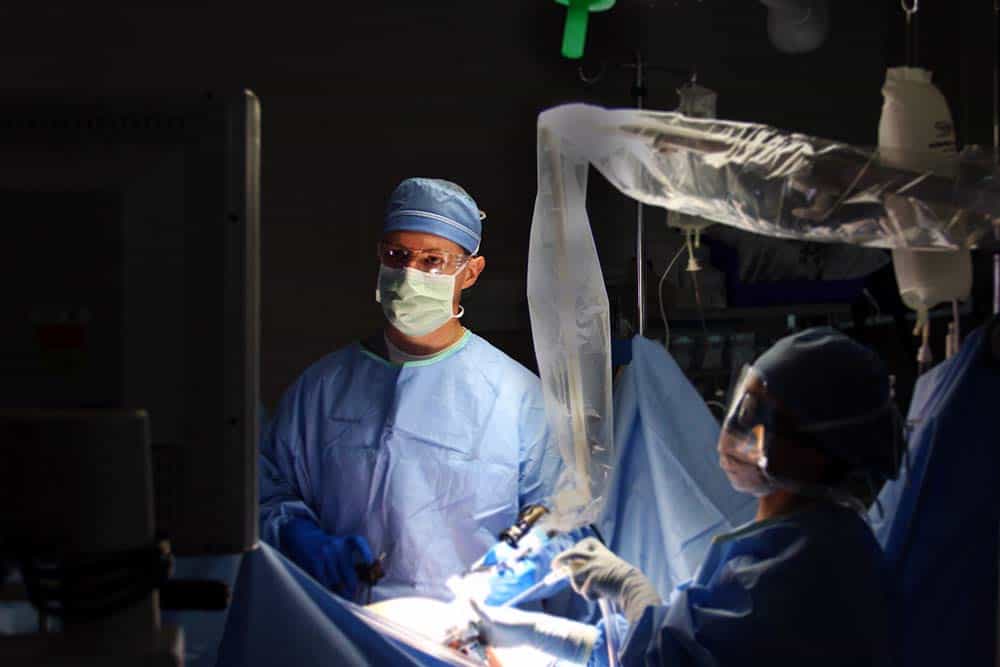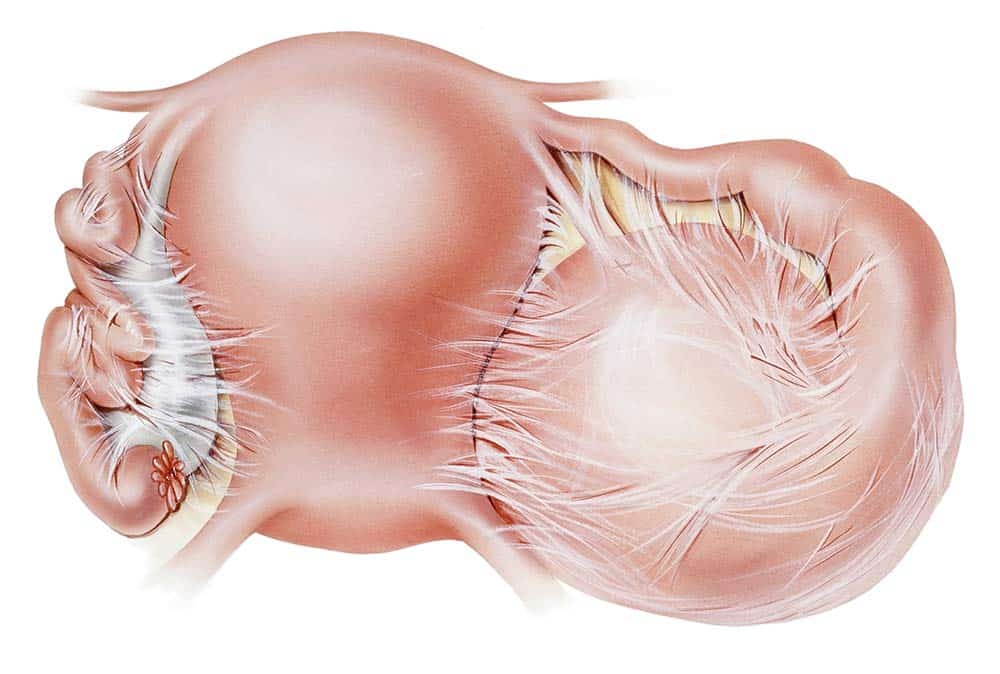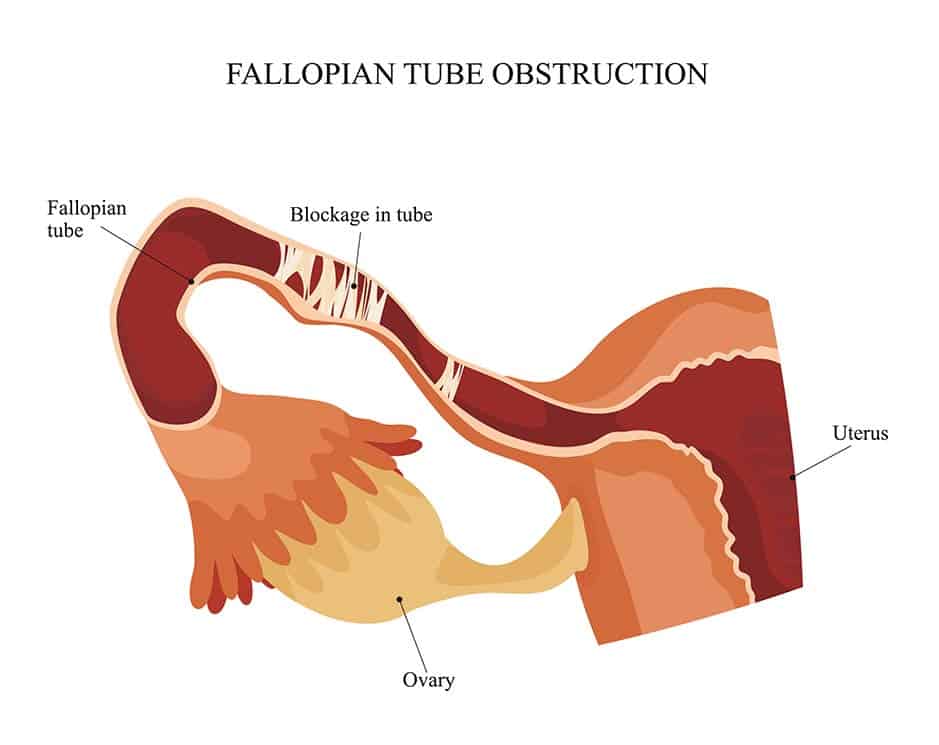Tubal Blockage
Approximately 1 in 4 women with infertility have a tubal blockage. This condition makes achieving pregnancy difficult (if not impossible) since healthy fallopian tubes are needed for the egg to be transported to the uterus and for fertilization to occur. Different types of tubal blockage can cause different problems – from infertility and recurrent miscarriage to a higher chance of ectopic pregnancy.
While diagnosing blocked fallopian tubes can be relatively easy, effectively treating tubal problems can be more challenging and requires a specialist trained in advanced reproductive procedures. At Veritas Fertility & Surgery, we provide treatments for all types of tubal blockage.
What causes tubal blockage?
Fallopian tubes can become blocked for a variety of reasons. Often times, the location of a tubal blockage can provide clues about the cause of the blockage.
- Proximal blockage (near the uterus): caused by tubal spasm, scarring from inflammatory conditions, or blockage from debris or tubal polyps.
- Mid-segment blockage (middle of the fallopian tube): caused by a tubal ligation, prior ectopic pregnancy, pelvic adhesions, or endometriosis.
- Distal blockage or hydrosalpinx (end of the fallopian tube): caused by prior pelvic infection (pelvic inflammatory disease or “PID”) or extensive endometriosis.

What are the symptoms of tubal blockage?
Most women with blocked fallopian tubes have no symptoms, but instead simply have difficulty achieving pregnancy. However, when a tubal blockage is caused by pelvic scar tissue or endometriosis, women may experience pelvic pain or painful periods. Additionally, some women with a hydrosalpinx may also experience recurrent miscarriages.
How is tubal blockage diagnosed?
Several diagnostic tests are available to help diagnose tubal blockages:
- Hysterosalpingogram (HSG)
An X-ray procedure in which iodine contrast is injected into the uterine cavity and flows through the tubes before spilling in the pelvic cavity. How the contrast flows down each tube and into the pelvic cavity reveals whether a blockage is present and, if so, what kind.
- Selective salpingogram
A more specialized kind of HSG in which contrast is injected into each tube independently. The procedure also allows for fallopian tube recanalization to unblock the tube.
- Saline “bubble test”
An ultrasound procedure in which fluid with bubbles is injected into the uterine cavity and down the tubes.
How is tubal blockage treated?
Many women are told that the only way to get pregnant with blocked fallopian tubes is to use in vitro fertilization (IVF). However, several specialized procedures exist to repair and unblock tubes. Since very few fertility clinics offer these treatments, women often don’t consider this option until they start doing their own research to look for alternatives.
The doctors at Veritas Fertility and Surgery provide the following treatments for blocked fallopian tubes:
Fallopian tube recanalization
- Treats proximal tubal obstruction (portion of the tube near the uterus)
- 20-minute procedure that does not require anesthesia
- 95% success of reopening blocked tube(s)
- 60-75% pregnancy rate
Tubo-tubal anastomosis (tubal ligation reversal)
- Treats mid-segment tubal blockage
- Surgical procedure performed under anesthesia
- 70-75% pregnancy rate in most cases (depending on the length of the tube after repair)
Neosalpingostomy/fimbrioplasty
- Treats distal tubal blockage, hydrosalpinx, and tubal adhesions/scar tissue
- Surgical procedure performed under anesthesia
- 60-70% pregnancy rate in most cases (depending on the appearance and size of the tube after repair)


Our Approach
Most fertility clinics offer just one answer when it comes to tubal blockages: IVF. At Veritas Fertility & Surgery, we provide couples with effective treatment options for opening blocked fallopian tubes, allowing them to achieve pregnancy naturally. The doctors at Veritas Fertility and Surgery are a small group of reproductive surgeons with the training and expertise necessary to correct any type of tubal blockage. In most cases, fallopian tube recanalization and tubal reconstructive surgeries are more effective and far less expensive than IVF.


